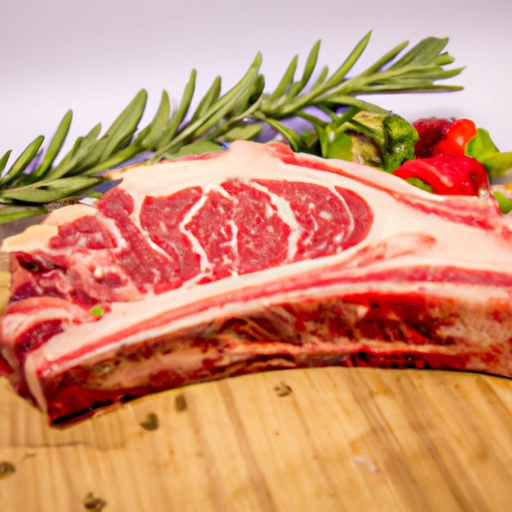Beef Rib
Description

Beef rib, also known as beef ribeye or rib steak, is a succulent, flavorful cut of meat that comes from the rib section of the cow. This premium cut includes the rib bone, which contributes to its rich flavor and juicy tenderness when cooked. Beef ribs can be found in various sizes, with the weight typically ranging from 8 oz (227 grams) to 24 oz (680 grams) or more per piece. In European metric units, that translates to approximately 225 to 675 grams. Beef ribs are prized for their marbling, which refers to the intramuscular fat that gives the meat its succulent texture and taste.
Common uses
Beef ribs are commonly used in a variety of dishes such as barbecue ribs, slow-cooked stews, and roasted rib racks. They are also a popular choice for special occasions and holiday meals, where a prime rib roast can be the centerpiece of a lavish dinner.
Nutritional value
Calories
A typical serving of beef ribs (3 oz or 85 grams) contains approximately 190 to 250 calories, depending on the level of marbling and trim.
Protein
Beef ribs are an excellent source of protein, with a 3 oz serving providing about 22 to 25 grams of high-quality protein.
Fat
The fat content in beef ribs varies, but a 3 oz serving can contain between 15 to 20 grams of fat, most of which is saturated and monounsaturated fat.
Carbohydrates
Beef ribs contain no carbohydrates, making them a popular choice for low-carb and ketogenic diets.
Vitamins
This cut of meat is a good source of vitamins, particularly B vitamins such as B12, B6, niacin, and riboflavin, which are important for energy metabolism and red blood cell production.
Minerals
Beef ribs are also rich in minerals like zinc, selenium, phosphorus, and iron, which are crucial for various bodily functions, including immune health and bone strength.
Health benefits
Due to their significant protein content, beef ribs can help in muscle building and repair. The presence of B vitamins and minerals supports overall health and wellness. Eating beef ribs can also contribute to satiety, potentially aiding in weight management when consumed as part of a balanced diet.
Potential risks
However, due to the high saturated fat content, it's advisable to consume beef ribs in moderation, especially for individuals with heart conditions or those monitoring their cholesterol intake. It's also important to consider the cooking method, as grilling or charring at high temperatures may produce compounds that have been linked to health risks.
Common recipes
Beef ribs are featured in recipes such as barbecue beef ribs, braised short ribs, beef rib roast (prime rib), and beef rib soup.
Cooking methods
Popular cooking methods for beef ribs include grilling, smoking, braising, and roasting. Slow cooking is often used to tenderize the tougher cuts and enhance their flavor.
Pairing with other ingredients
These ribs pair well with bold spices, herb rubs, and rich sauces. They also complement sides like mashed potatoes, roasted vegetables, and coleslaw.
Summary
Beef ribs are a delectable and versatile ingredient that can be cooked in various ways to suit different tastes and occasions. While they offer substantial nutritional benefits, it's important to consume them in moderation due to their high fat content. When prepared with care, beef ribs can be a show-stopping addition to any meal, celebrated for their depth of flavor and tender texture.